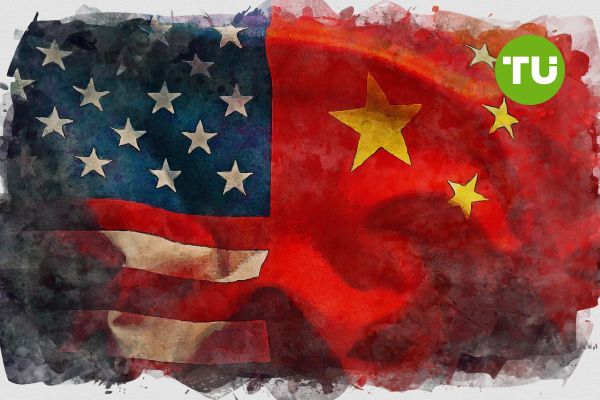United States may impose 245% tariff on China
 White House warns China of full-scale tariff retaliation amid deepening standoff.
White House warns China of full-scale tariff retaliation amid deepening standoff.
The U.S.-China trade conflict escalated sharply this week after President Donald Trump signed executive orders threatening to increase tariffs on Chinese imports to an unprecedented 245%.
The move would mark the highest cumulative rate proposed since the trade war began, with the White House citing a “lack of respect” from Beijing and economic coercion as driving factors, reports Cryptopolitan.
Initially, the Trump administration implemented a 20% duty on Chinese goods, later adding a 34% tariff on April 2 and a subsequent 50% surcharge, raising the U.S. burden to 104%. These measures were matched by China, prompting tit-for-tat hikes to 125% on both sides last week. The White House now says China’s latest retaliation could trigger the full 245% tariff rate.
In addition to broad import duties, Trump reinstated a 25% tariff on steel and aligned the aluminum rate to close exemptions. He also ordered probes into imported critical minerals, timber, and lumber products. The Commerce Department has been tasked with determining whether foreign reliance on these materials threatens U.S. national security.
Executive actions target minerals, rare earths, and digital taxes
One of the new executive orders mandates a Section 232 investigation under the Trade Expansion Act of 1962. Commerce Secretary Howard Lutnick is expected to assess U.S. vulnerabilities stemming from foreign dependence on processed critical minerals, especially after China suspended exports of six rare earth metals vital to the defense, aerospace, and tech industries.
The administration cited foreign “price manipulation” and “export restrictions” as examples of economic coercion. Tariffs could be expanded or replaced by a national security-driven rate based on the outcome of the investigation.
Economic impact and political impasse
Despite increasing pressure from U.S. tariffs, China’s economy showed resilience, posting 5.4% GDP growth in Q1 2025—exceeding analysts’ expectations. Still, Chinese officials warned of mounting external headwinds and weak domestic demand.
Talks between Washington and Beijing appear stalled, with both leaders holding firm. “We don’t have to make a deal with them,” Trump told reporters. “They need our money.”
As the economic standoff deepens, industries on both sides brace for prolonged disruption, and the global economy watches for signs of a breakthrough—or further escalation.
Recently we wrote, that President Donald Trump’s abrupt reversal of most newly proposed tariffs may have sparked a historic market rally on Wednesday, but it’s unlikely to prevent a deeper correction in equities, Goldman Sachs warned in a note on Thursday.
Recently we wrote, that president Donald Trump’s abrupt reversal of most newly imposed tariffs may have sparked a historic market rally on Wednesday, but it’s unlikely to prevent a deeper correction in equities, Goldman Sachs warned in a note on Thursday.













































































































































